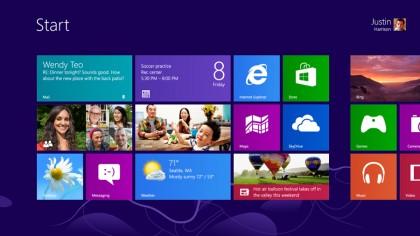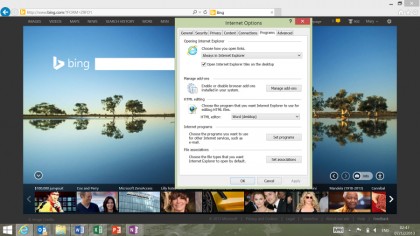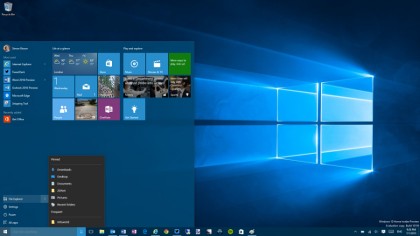OS showdown: Windows 10 vs Windows 8.1 vs Windows 7
What's really new in the latest version of Windows
Windows 8.1: More than just Metro
The full-screen Start screen, the charm bar and the new smartphone-style apps (known at the time as Metro) that opened in their own windows were the most obvious new features of Windows 8 (and the Metro-only Windows RT version that ran on ARM tablets), and the emphasis on touch alienated plenty of desktop and mouse users.

But Windows 8 was also crammed with support for new hardware, significant security improvements like secure boot, improved biometrics and a new firewall with packet filtering, a Windows To Go option for running Windows straight from a USB stick, improvements to Direct X, and a version of Hyper-V for virtualisation that was almost exactly the same as in Server 2012.
It added connected standby – a way of powering down PCs with SoC CPUs so that they could stay connected, so email would be up to date. Windows 8 also improved battery life by measuring the power usage of every single component in a PC and then turning them on or off in the most efficient order.

A year later, Windows 8.1 put the Start button back, let you choose to boot straight to the desktop and made some changes to the Metro interface to let you choose what size window each app appeared in. But it also added a wide range of security and management improvements for business users and built in support for more new hardware, from Miracast for streaming your screen to another device to Wi-Fi direct printing.
It also integrated OneDrive (then called SkyDrive) with Explorer. That meant signing in with your Microsoft account didn't just get you apps from the Store and sync your settings to other PCs; it let you see and save files in the cloud, even if you weren't connected.
Windows 10: Forward and back
With Windows 10, Microsoft has backed off on many of the ideas of Windows 8. Metro apps – now known as Universal apps – run on the desktop like any other app, but the same app can run on a PC, a Windows 10 phone, Xbox One and even HoloLens. OneDrive integration is far more basic – you can still choose what folders to sync but you no longer see the list of your folders when you're not online. The charm bar is gone, replaced by an iOS-style Action Center for notifications.
There's a brand new browser called Edge, that's far more like Chrome, while Internet Explorer is only there for compatibility with older business sites (although IE will likely get a lot of use until Edge gets more of its missing features later this year).
Are you a pro? Subscribe to our newsletter
Sign up to the TechRadar Pro newsletter to get all the top news, opinion, features and guidance your business needs to succeed!

Again, there are plenty of security improvements, from the Windows Hello system that can log you in with your face or iris as well as your fingerprint, through to two-factor authentication, containers to protect business data, and more ways of using Hyper-V to protect your information. The performance improvements continue, and the new way of installing the OS is faster and more likely to be able to keep your files and software. Windows 10 is even better at cleaning up after installs and updates so it leaves more disk space free.
Away from the user interface changes, which are designed to make Windows 10 work well with the mouse and keyboard while still being fairly easy to use on a tablet, many of the improvements build on the developments in Windows 7 and Windows 8.1. And the shift to Windows as a Service, where you keep getting new features without getting a new version of Windows, means that these major updates from one release of Windows to the next, might become a thing of the past.
Microsoft is hoping that instead of deciding whether to shell out for an upgrade to the next version of Windows based on specific new features, that you'll just keep using a PC with Windows and get the features as they come along.
- Read more about Windows 10 migration on our sister website, ITProPortal.com
Mary (Twitter, Google+, website) started her career at Future Publishing, saw the AOL meltdown first hand the first time around when she ran the AOL UK computing channel, and she's been a freelance tech writer for over a decade. She's used every version of Windows and Office released, and every smartphone too, but she's still looking for the perfect tablet. Yes, she really does have USB earrings.